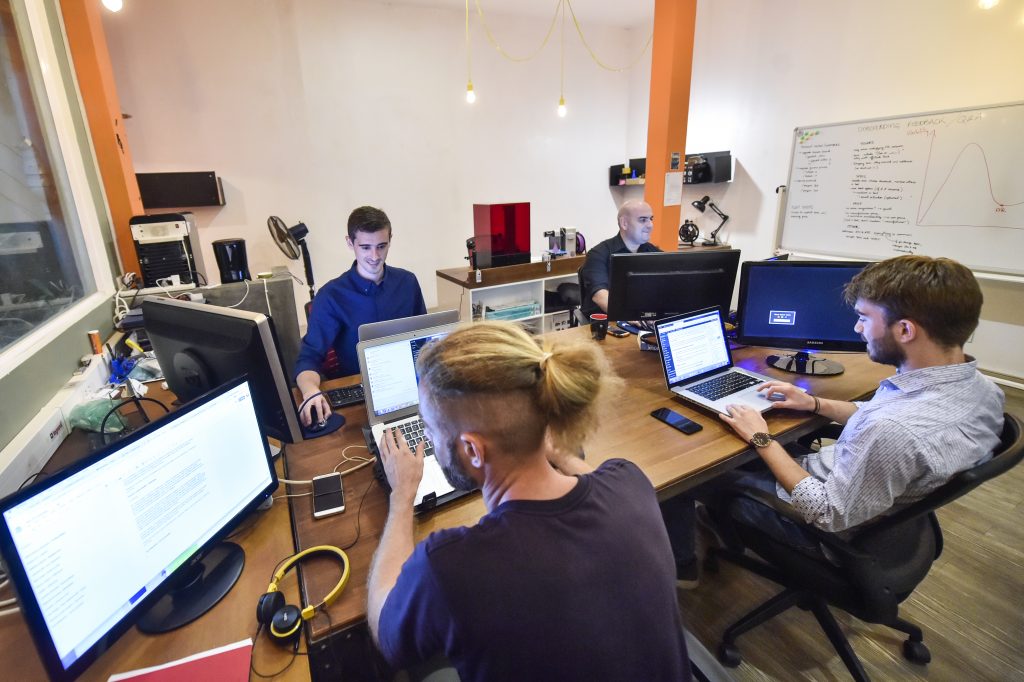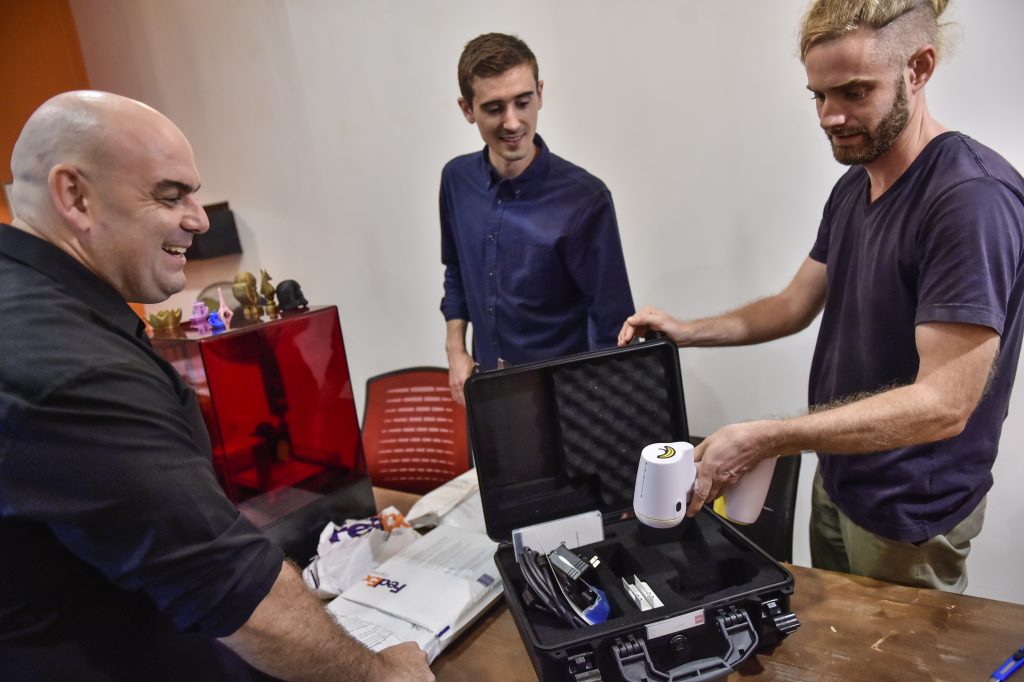Aniwaa was founded in 2013 as a 3D printer comparison website by French entrepreneurs Martin Lansard, CEO, and Pierre-Antoine Arrighi as technical advisor.
Recently, Aniwaa announced that in addition to covering 3D printing and 3D scanning the Phnom Penh, Cambodia based company would be adding VR/AR comparisons to their redesigned site.
I caught up with CEO Martin Lansard to learn more about the change in strategy, the links between 3D printing and virtual reality and how Aniwaa review 3D printers and other technology.

3D Printing Industry: What else can we expect to see from Aniwaa this year?
Martin Lansard, Aniwaa: This year, we will be focusing on increasing the coverage of our current verticals and producing more product reviews and guides, while continuing to improve our comparison engines to make our users’ lives easier. We’ve just expanded into VR and AR headsets and rolled out a brand new site, which is very exciting. With this launch behind us, we’re now back to keeping track of new product releases and industry trends, to ensure our content continues to be comprehensive, up to date and reliable. Emerging technologies move fast and we must keep with the fast pace!
3D Printing Industry: Your company has been in the 3D printing industry since 2012, how has the market changed during that time?
Martin Lansard, Aniwaa: The market has evolved quite a bit since we got started and as a result, so have our comparison engines. The biggest change we’ve seen is probably the emerging of a professional segment, in between consumer 3D printers and industrial-grade additive manufacturing solutions. Many 3D printer manufacturers have repositioned their brand and are catering to this professional target.
We’ve also added a number of new filters over the years to keep up with market trends and reflect the evolving expectations of our users. For example, over the last year, high-performance materials such as PEEK or PEI have become increasingly popular and specific hardware features have gained traction like independent dual extruders and conveyor belt build plates. These trends are reflected through out our comparison engine and our content.
Back in 2012, desktop SLA 3D printers were almost unheard of and a few years down the line you can now find affordable models. Metal 3D printing has been moving forward in leaps and bounds also as of late and has become one of the hottest segments in additive manufacturing.
3D Printing Industry: “Aniwaa is the largest 3D printers and 3D scanners comparison website,” who would be your competitors and the next largest?
Martin Lansard, Aniwaa: A handful of websites do 3D printer comparisons such as 3D Hubs or Pinshape, but it’s not their core business. We cover 1,400+ 3D printers in our database, which is by far the largest and most comprehensive database available about this market. For 3D scanners and VR/AR headsets, we haven’t seen any comparison sites like us yet, only some niche news sites. Our focus on emerging tech comparison, our methodology and hands-on approach are things our users love about Aniwaa and set us apart from other tech reviews sites.

3D Printing Industry: Do you still plan to continue reviewing 3D printers and how do you carry out these reviews?
Martin Lansard, Aniwaa: Of course we will continue to review 3D printers! We already have a couple in the pipeline in fact. We test and review products in-house following our independent testing protocol. Typically, manufacturers ship us a test unit which we keep for about one month to carry out extensive tests and write our review. We realize a rating will never fully reflect the value of a product but hope that our experience and insights will help our readers decide for themselves. We never charge for a review or accept compensation but always ask manufacturers to cover the shipping and return costs of the test units they send. It’s very important for us to be as objective and unbiased as possible.
3D Printing Industry: Can you tell me some more about how 3D printing and VR/AR are connected? Is this something many people are working with?
Martin Lansard, Aniwaa: There are many connections and synergies between these two technologies. Some of these connections are inevitable such as the way in which AR will revolutionize the way we interact with machines and the digital world.
But it’s not just about interacting with machines, VR and AR are already having an impact on how teams collaborate with each other. Take the car industry as an example. Using a 3D scanner, designers can capture a digital 3D model of a prototype, load it in VR or AR and collaborate in real-time on the design with team members from the same office or overseas, thus streamlining the whole process and making it more organic.
In a lot of cases, VR will be an extra tool for professionals whose activity has been impacted by 3D printing. Architects are a great example: 3D printing has made creating architectural models much easier and VR now lets them create immersive models to literally let their customers walk through their work. The list goes on. When you talk about VR and AR, a lot of people think about gaming, but the truth is that this technology is going to permeate our professional and personal lives in ways we can’t predict yet, much like 3D printing years ago.

3D Printing Industry: There is more information online about 3D printing than ever before, what makes Aniwaa stand out?
Martin Lansard, Aniwaa: I think that what makes Aniwaa stand out is the fact that we take the time to get things right. We aim to provide a comprehensive view of the 3D printers market and deliver reliable, up-to-date product information. Since the beginning, people have come to us for this reason and to cut through the noise. This has defined how we go about our work and how we plan for the future. When we set out on a new piece of content, whether it be big or small is not important. What counts is that we create something factual, relevant and actionable. How do we do this?
We collect technical specs and product information from manufacturers, monitoring the market daily for the latest product releases and updates. We do this ourselves, manually, to ensure the data is always accurate and relevant. We normalize this data to make it easily searchable through our comparison tools. We strive to provide honest and complete overviews of products we cover, based on our team’s research, community feedback, and first-hand experience when possible. It’s a time-consuming and never ending job, but we love it!
3D Printing Industry: What are your thoughts about the growing 3D printing community and how information about products is shared?
Martin Lansard, Aniwaa: The 3D printing community has really come together over the years and it is great to see the rise of a vibrant 3DP Youtubers community. We’ve followed this closely as we have integrated a lot of Youtube reviews to our product pages, as some of these are really top quality and useful.
However, there are limits to this phenomena. Youtubers tend to cover the same limited range of products: typically consumer level 3D printers from famous brands. This is a shame because the market is so rich and diverse that it doesn’t give a comprehensive view of what’s out there. Obviously, this is where Aniwaa comes in. We’ve made it our business to give people a comprehensive, up-to-date and reliable overview of all 3D printing solutions, whether these are consumer level or big industrial additive manufacturing machines.
![[L-R] Alex Lodola Head of Marketing, Martin Lansard and Steve Noble Head of Content.](https://3dprintingindustry.com/wp-content/uploads/2018/07/ANIWAA-TEAM-PHNOM-PENH-682x1024.jpg)
Martin Lansard, Aniwaa: As far as new products are concerned, we’ve definitely noticed that Chinese brands are continuing to grow and most importantly raising their standards. It will be interesting to see how this evolution plays out in the mid to long term, given the Chinese government’s ambitions tech wise over the next 5 to 10 years. As I mentioned earlier, the professional segment is also very dynamic and has shown significant growth and potential over the last year. Desktop/benchtop SLS is also on the rise and that is something I find quite impressive given the fact that these were large and expensive machines just a couple of years ago. Same goes for SLA with many more brands focusing on making this technology more accessible.
It’s also interesting that a lot of iconic brands in the consumer/professional space haven’t released truly disruptive products in a while. Many products launched lately are iterations on previous best-sellers but as far as real innovations, 2018 has been quite slow until now. Maybe the FFF technology has reached a plateau?
The introduction of conveyor belt build plates for “infinite 3D printing” was a potentially disruptive innovation we saw last year but it has yet to become a common feature on 3D printers. We noticed a lot of the innovation actually comes from the materials with a lot of new high-performance filaments designed for functional prototyping for example.
Overall, the 3D printer market is still very fragmented with hundreds of brands focusing on specific sub-niches. A comprehensive database such as the one we offer is needed more than ever to navigate this complex market.
For all the latest 3D printing news, subscribe to the 3D Printing Industry newsletter. Also, follow us on Twitter, and like us on Facebook.
Make your next additive manufacturing career move or hire new talent. Search and post 3D Printing Jobs on our free jobs service.
Featured image shows the Aniwaa team at their Phnom Penh office. Photo via Aniwaa.


